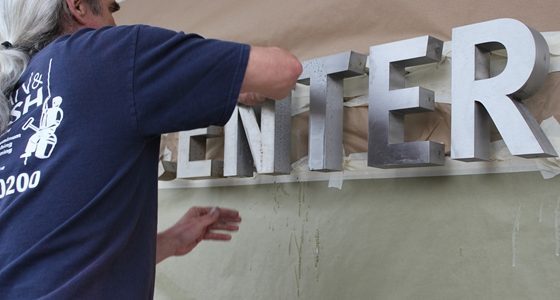
Stainless steel building exteriors or structural features are resistant to damage from the environment, but they are not immune. This shiny, modern material can rust over time. However, with proper care and preventative measures, you should be able to keep ugly and rusted stainless steel at bay and maintain the professional, clean and contemporary look that stainless steel features can provide.
To protect your building's appearance you need to understand why rust can form on stainless steel and what you can do about it.
Why does stainless steel rust?
Because stainless steel is so much less likely to rust than other metal alloys, it often surprises people that their stainless steel can rust at all. However, if you find rust or a stain on your stainless steel, it does not mean that you have a faulty material. Stainless steel can corrode or rust under the right conditions.

There are more than 100 types of stainless steel, but one of the consistent features that differentiates it from other types of steel is the chromium, which gives stainless steel its silvery shine and helps reduce how easily it rusts. Other iron alloys develop iron oxide or rust when exposed to air and moisture, but the chromium in stainless steel helps create a film layer on the exterior of the metal that prevents easy water and oxygen from rusting the metal.
Because there are so many different kinds of stainless steel, the way that they can rust also varies. Sperko Engineering Services pointed to the introduction of a second metal as one of the most common, however.
"The simplest condition under which rusting can occur on stainless steel is when a piece of ordinary carbon or low-ally steel is rubbed against the surface of an otherwise corrosion-resistant piece of stainless steel," a 2014 Sperko Engineering Services report explained. "The iron from the ordinary steel will rub off onto the stainless steel surface as a film of unalloyed steel, and, after exposure to moisture in the atmosphere for a few days, that unalloyed steel film will form ugly rust."
Rust can also occur following damage to the metal, mistakes in construction or in areas where it was welded.
"Professional cleaners have the tools and high temperature chemicals that can help remove unsightly rust stains."
Treating and preventing rust on your stainless steel
Just because oxidation can occur to your building's exterior doesn't mean that you have to put up with ugly, rust marks on your building. Often rust is only on the outermost layer of the structure and can be cleaned off with professional cleaning.
Trying to tackle a rust cleaning job on stainless steel by yourself isn't recommended, because the process is different than cleaning many other industrial surfaces. Steel wool or chlorine, often used on tough stains, will actually only make stainless steel rust or corrosion worse. Clean & Polish Building Solutions has the tools and high temperature chemicals that can help remove unsightly rust stains.
Additionally, regular maintenance your stainless steel structures and using certain protection chemicals can help prevent further rust. These chemical additives can bolster the existing film or coating and protect the surface from rust in the first place.


